Haishan Wu
Detecting Sybil Addresses in Blockchain Airdrops: A Subgraph-based Feature Propagation and Fusion Approach
May 14, 2025Abstract:Sybil attacks pose a significant security threat to blockchain ecosystems, particularly in token airdrop events. This paper proposes a novel sybil address identification method based on subgraph feature extraction lightGBM. The method first constructs a two-layer deep transaction subgraph for each address, then extracts key event operation features according to the lifecycle of sybil addresses, including the time of first transaction, first gas acquisition, participation in airdrop activities, and last transaction. These temporal features effectively capture the consistency of sybil address behavior operations. Additionally, the method extracts amount and network structure features, comprehensively describing address behavior patterns and network topology through feature propagation and fusion. Experiments conducted on a dataset containing 193,701 addresses (including 23,240 sybil addresses) show that this method outperforms existing approaches in terms of precision, recall, F1 score, and AUC, with all metrics exceeding 0.9. The methods and results of this study can be further applied to broader blockchain security areas such as transaction manipulation identification and token liquidity risk assessment, contributing to the construction of a more secure and fair blockchain ecosystem.
Artificial Intelligence Mangrove Monitoring System Based on Deep Learning and Sentinel-2 Satellite Data in the UAE (2017-2024)
Nov 18, 2024

Abstract:Mangroves play a crucial role in maintaining coastal ecosystem health and protecting biodiversity. Therefore, continuous mapping of mangroves is essential for understanding their dynamics. Earth observation imagery typically provides a cost-effective way to monitor mangrove dynamics. However, there is a lack of regional studies on mangrove areas in the UAE. This study utilizes the UNet++ deep learning model combined with Sentinel-2 multispectral data and manually annotated labels to monitor the spatiotemporal dynamics of densely distributed mangroves (coverage greater than 70%) in the UAE from 2017 to 2024, achieving an mIoU of 87.8% on the validation set. Results show that the total mangrove area in the UAE in 2024 was approximately 9,142.21 hectares, an increase of 2,061.33 hectares compared to 2017, with carbon sequestration increasing by approximately 194,383.42 tons. Abu Dhabi has the largest mangrove area and plays a dominant role in the UAE's mangrove growth, increasing by 1,855.6 hectares between 2017-2024, while other emirates have also contributed to mangrove expansion through stable and sustainable growth in mangrove areas. This comprehensive growth pattern reflects the collective efforts of all emirates in mangrove restoration.
SolarNet: A Deep Learning Framework to Map Solar Power Plants In China From Satellite Imagery
Dec 10, 2019
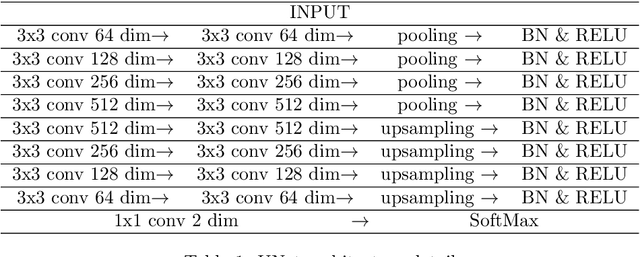
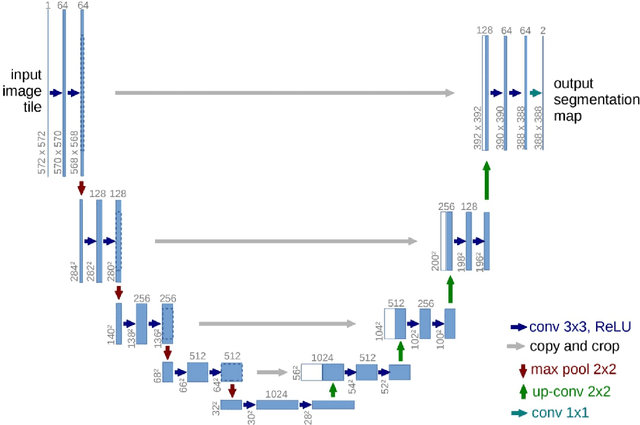

Abstract:Renewable energy such as solar power is critical to fight the ever more serious climate change. China is the world leading installer of solar panel and numerous solar power plants were built. In this paper, we proposed a deep learning framework named SolarNet which is designed to perform semantic segmentation on large scale satellite imagery data to detect solar farms. SolarNet has successfully mapped 439 solar farms in China, covering near 2000 square kilometers, equivalent to the size of whole Shenzhen city or two and a half of New York city. To the best of our knowledge, it is the first time that we used deep learning to reveal the locations and sizes of solar farms in China, which could provide insights for solar power companies, market analysts and the government.
Lesion detection and Grading of Diabetic Retinopathy via Two-stages Deep Convolutional Neural Networks
May 02, 2017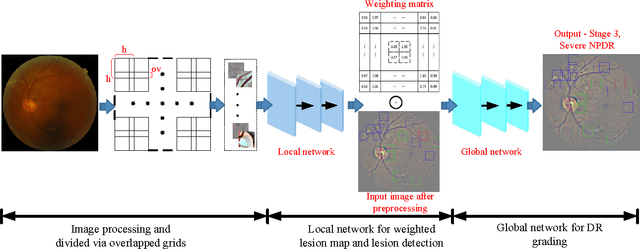
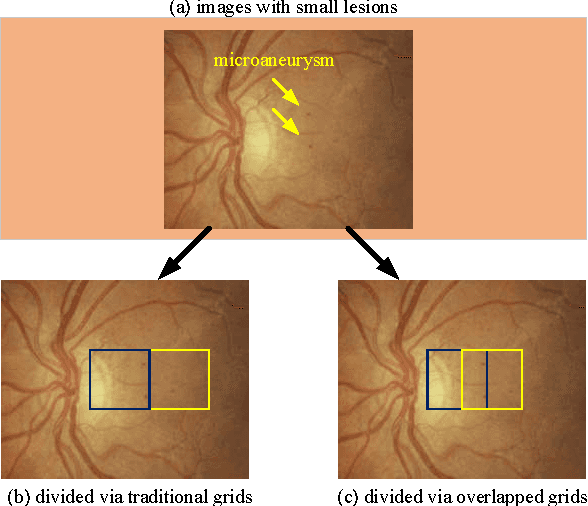
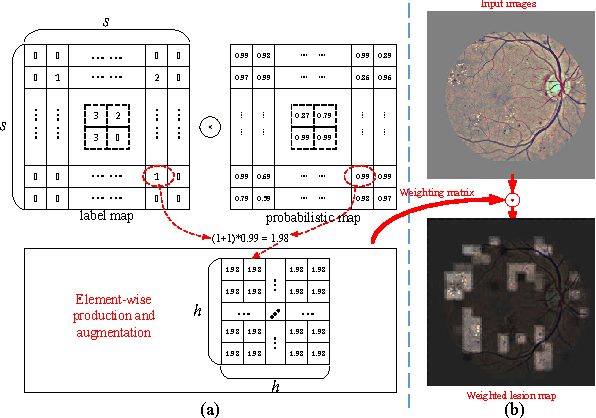
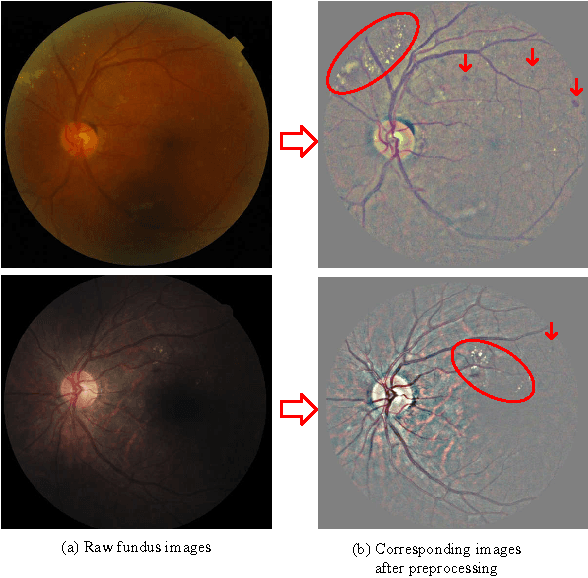
Abstract:We propose an automatic diabetic retinopathy (DR) analysis algorithm based on two-stages deep convolutional neural networks (DCNN). Compared to existing DCNN-based DR detection methods, the proposed algorithm have the following advantages: (1) Our method can point out the location and type of lesions in the fundus images, as well as giving the severity grades of DR. Moreover, since retina lesions and DR severity appear with different scales in fundus images, the integration of both local and global networks learn more complete and specific features for DR analysis. (2) By introducing imbalanced weighting map, more attentions will be given to lesion patches for DR grading, which significantly improve the performance of the proposed algorithm. In this study, we label 12,206 lesion patches and re-annotate the DR grades of 23,595 fundus images from Kaggle competition dataset. Under the guidance of clinical ophthalmologists, the experimental results show that our local lesion detection net achieve comparable performance with trained human observers, and the proposed imbalanced weighted scheme also be proved to significantly improve the capability of our DCNN-based DR grading algorithm.
Store Location Selection via Mining Search Query Logs of Baidu Maps
Jun 12, 2016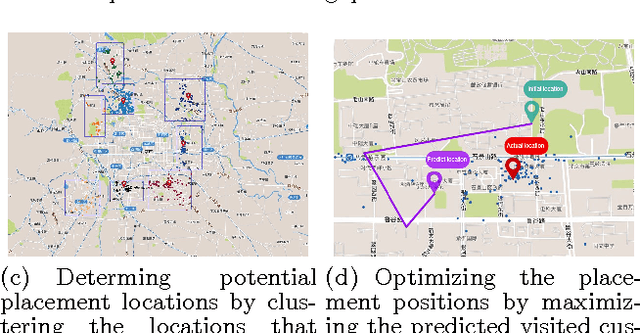
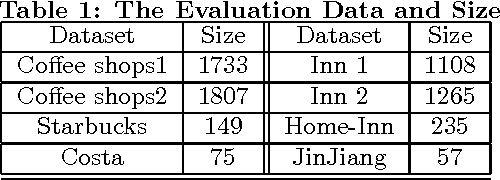
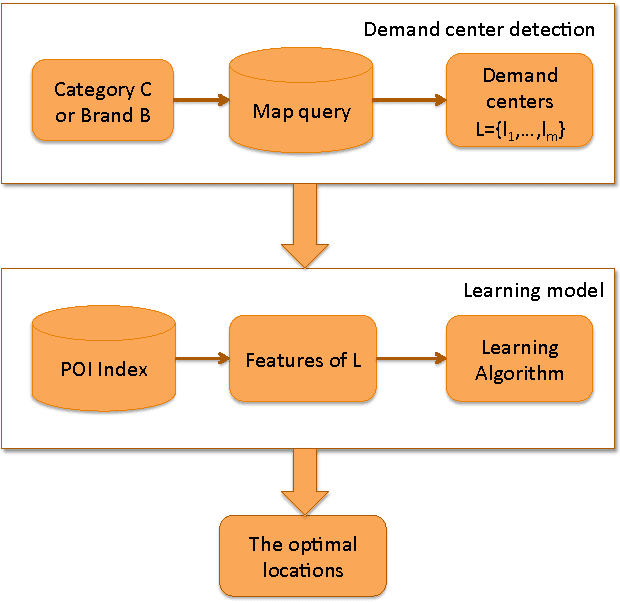
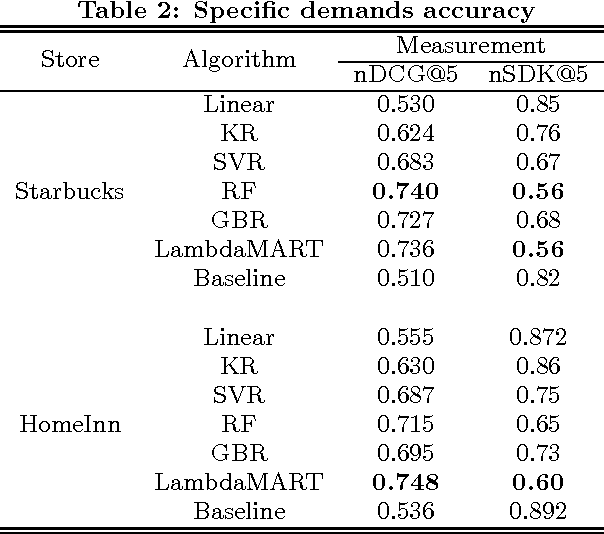
Abstract:Choosing a good location when opening a new store is crucial for the future success of a business. Traditional methods include offline manual survey, which is very time consuming, and analytic models based on census data, which are un- able to adapt to the dynamic market. The rapid increase of the availability of big data from various types of mobile devices, such as online query data and offline positioning data, provides us with the possibility to develop automatic and accurate data-driven prediction models for business store placement. In this paper, we propose a Demand Distribution Driven Store Placement (D3SP) framework for business store placement by mining search query data from Baidu Maps. D3SP first detects the spatial-temporal distributions of customer demands on different business services via query data from Baidu Maps, the largest online map search engine in China, and detects the gaps between demand and sup- ply. Then we determine candidate locations via clustering such gaps. In the final stage, we solve the location optimization problem by predicting and ranking the number of customers. We not only deploy supervised regression models to predict the number of customers, but also learn to rank models to directly rank the locations. We evaluate our framework on various types of businesses in real-world cases, and the experiments results demonstrate the effectiveness of our methods. D3SP as the core function for store placement has already been implemented as a core component of our business analytics platform and could be potentially used by chain store merchants on Baidu Nuomi.
 Add to Chrome
Add to Chrome Add to Firefox
Add to Firefox Add to Edge
Add to Edge